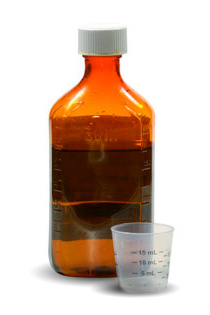Signs and Symptoms of Codeine Abuse

Codeine is a moderately strong opiate drug that is used in pain relief and for the suppression of coughs. But strong or weak, it is still an addictive drug with many symptoms of use in common with other opiates.
The road to addiction to codeine usually starts with an increasing tolerance to the drug. This means that a person could start out getting a reduction of pain or coughing at 15 milligrams but then make his or her way to higher dosages of 30 milligrams when the drug stops helping. This is the usual phenomenon with opiate painkillers. And the higher the dosage, the more likely it is that a person will become addicted when the use goes on for a long period.
In 2009, it was estimated that 30,000 people in the United Kingdom were addicted to a codeine-containing drug. For some people, addiction to this opiate can set in quickly. Since everyone is different, it is hard to state how quickly this can happen.
If a codeine user becomes addicted, he may go back to the doctor to get a higher dosage of this drug. If the doctor refuses or even cuts him off without addressing the addiction, the person may turn to criminal activities to avoid withdrawal symptoms and sickness.
Some People May Process Codeine More Quickly
The Food and Drug Administration has stated that some pregnant or nursing women may break down codeine at a very fast rate, meaning that if they are taking it while pregnant or nursing, the baby may receive too much of the drug, too fast. In one reported incident, a healthy baby died when nursed by a mother who was taking codeine for an episiotomy. It was found that the mother’s body processed codeine rapidly, resulting in an overdose for the baby.
A person who processes codeine rapidly could ingest high dosages in a short time period, which could contribute to rapid addiction.
Codeine Abuse Signs to Look For

Like other opiates, codeine causes nausea, vomiting, difficulty breathing and drowsiness. A person may present a sedated appearance. He may also suffer stomach pain and constipation and may be itchy. A codeine user may also not be able to think clearly and may not be able to operate large equipment safely. The drug may also interfere with their ability to drive safely. Especially when a user first starts taking the drug, dizziness and fainting may occur.
Some people also experience changes in vision, and a heavy user may have seizures. If an overdose is consumed, the signs will include loss of consciousness, shallow and slow breathing, limpness, slow heartbeat and cold and clammy skin.
Codeine is not as widely abused as some drugs, but it may get a person started in the direction of opiate abuse. A person could start with codeine and then end up abusing oxycodone or hydrocodone, which are more highly addictive.
No matter what opiate or other drug is being abused, when a person can’t stop using a drug and when his life is being damaged or even destroyed by the addiction, he needs help to quit. He needs to be able to have hope of a full recovery. Many people abusing opiates don’t even get high; they simply need the drug to function each day. There needs to be a clear path for them to attain a productive, enjoyable life once again.
Narconon Has Rescued Many Thousands of Addicts
When it is time to get clean and sober at last, Narconon centers around the world can provide that route. All Narconon addiction recovery facilities offer the full Narconon rehabilitation program.
A thorough detoxification followed by counseling and life skills training enable a person in a drug program to see things in a whole new light so they can live an enjoyable, productive life again. This is the way the Narconon drug and alcohol rehabilitation program works.
See Also:
Resources:
- http://www.drugs.com/dosage/codeine.html
- http://www.fda.gov/ForConsumers/ConsumerUpdates/ucm315497.htm
- http://www.telegraph.co.uk/health/healthnews/6134740/QandA-what-is-codeine-addiction.html
- http://www.fda.gov/Drugs/DrugSafety/PostmarketDrugSafetyInformationforPatientsandProviders/ucm118113.htm
- http://www.medicinenet.com/codeine/article.htm
 ®
®